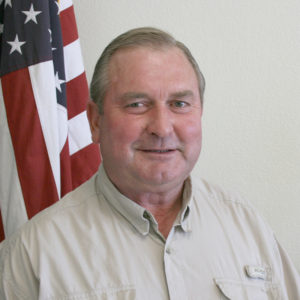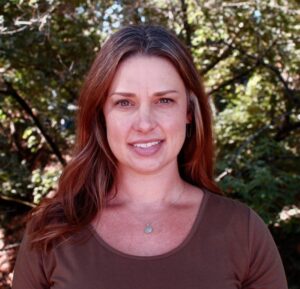Gualala River
District WatershedWatershed Overview
The Gualala River Watershed is located in the northwestern portion of Sonoma County and a small portion of Mendocino County. It drains an area of nearly 300 square miles through its vast network of streams before discharging into the Pacific Ocean near the town of Gualala. The Gualala River Watershed is a crucial coastal watershed for recovery efforts of the federally listed coho salmon.
This watershed’s unique elongated shape can be explained by the movement of the San Andreas fault which runs north-south through the watershed creating long linear reaches like the South Fork, which have little sinuosity. The Tombs Creek fault zone plays a more dominant role in shaping the eastern portions of the watershed which have a deflected look, influencing the headwaters of the North Fork, Rockpile Creek, Buckeye Creek and the Wheatfield Fork. The elevation in the Gualala River Watershed ranges from sea level at the Mouth of the Gualala River to 2,602 feet at Gube Mountain.
Land Use (Historic and Current):
The watershed has been subject to three eras of active land use:
- Old growth redwood harvesting throughout the lower alluvial basin areas from 1868 to 1911
- Tractor harvesting of remaining old growth conifer stands in the central reaches of the watershed from 1952 to 1968
- Cable/tractor harvesting of second growth coniferous stands from 1990 to present
Extensive logging and road building practices have contributed to erosion and mass wasting, producing a legacy of increased sediment loads severely impacting aquatic habitat in the Gualala River and its tributaries. Harvesting of coastal redwood and Douglas fir actively occurs today, but with substantially improved practices. Other common current land uses include grazing, vineyards and rural residency. 95% of the Gualala watershed is privately owned.
Vegetation
The watershed is characterized by mountainous rugged terrain covered by Coastal Redwood and Douglas fir forests in the northwestern, southwestern, and central portions of the watershed that are used extensively for timber. The interior consists largely of grasslands with scattered oaks.
Fish and Wildlife
The federally endangered Coho salmon (Oncorhynchus kisutch) were once present throughout four of the five subbasins of the Gualala River Watershed, but their populations significantly declined during the intense logging activities of the mid 20th century. Today, wild coho salmon have only been observed in the North Fork subbasin, but hatchery coho salmon have been planted in other areas of the watershed to aid in the recovery of the population. Although the Steelhead trout (Oncorhynchus mykiss) population did decline during that same time period, they can still be found today throughout the various streams of the Gualala River watershed.
Current and Past RCD Programs
The RCD can provide technical assistance to Gualala landowners and managers as well as direct landowners to other sources of educational, technical or financial assistance based on the natural resource concern. Past RCD projects are described below. Please contact us if you are interested in hearing more about how the RCD’s programs and services can support you.
Watershed Planning
- Watershed Planning includes the development of local Integrated Watershed Management Plans involving numerous stakeholders to determine how to more effectively manage the watershed in which they live. One way that Sonoma RCD has helped bring landowners together in the Gualala Watershed was through helping to form and establishment of the Gualala River Watershed Council (GRWC), whose purpose is to provide an environment for landowners, resource managers, agencies, community organizations and interested citizens to work towards restoring the natural balance of the Gualala River Watershed.
- In 2005, the Sonoma RCD in partnership with GRWC helped secure funds from the State Coastal Conservancy and implement the Gualala Estuary and Lower River Enhancement Plan. The Study determined the carrying capacity and health of the estuarine ecosystem for salmonids, as well as confirmed its importance in terms of over-all Gualala River ecosystem function.
On-the-Ground Projects
- Instream Habitat Enhancement Projects: Since 1996 the RCD has partnered with the Gualala River Watershed Council (GRWC) to secure funding and implement instream habitat projects for the improvement of salmonid habitat. The RCD was instrumental in implementing an instream habitat enhancement project that spanned four-phases and was implemented over 7 years from 2000 to 2006. Approximately, 284,000 board feet or nearly 400 pieces of non-merchantable logs were installed on various streams throughout the Gualala River Watershed on the Gualala Redwoods Inc (GRI) property. This collaborative project increased pool scour and creation, provided increased cover and habitat for coho salmon and steelhead, and reduced winter flow velocities.
- Rural Roads Improvement Program: Since 1996 the RCD has partnered with the GRWC to secure funding and perform CEQA compliance in order to conduct a number of sediment source assessments and implement rural road improvement projects on large industrial timber properties. Some of these include the Fuller Creek Road Storm Proofing Project, the Kelly Road, Wolf Creek, and Tombs Creek Road Assessments, and the Quarry Bridge Restoration Project. During the 2003-04 Little North Fork Road Improvement Project, 187 sites on 45 miles of road were upgraded and storm-proofed preventing thousands of cubic feet of sediment from entering the adjacent streams. The implementation of this roadwork resulted in the improvement of water quality by reducing upslope erosion impacts to aquatic resources which, in turn, enhanced anadramous salmonid habitat in the tributaries and mainstem of the Gualala River Watershed. Additionally, the landowner benefits greatly from these projects because correctly storm-proofed roads last much longer and require less maintenance
Water Resource Management
- The RCD helped secure funding for the Quality Assurance Project Plan (QAPP) for Monitoring Sediment Reduction in the Gualala River Watershed which the GRWC manages. Additionally, Sonoma RCD assisted in outreaching and finding new landowners to participate in the program. This is one of the most extensive water quality monitoring programs in the State, and includes 35 monitoring reaches and 110 water and air temperature monitoring sites throughout the Gualala Watershed. At each monitoring site the GRWC surveys thalweg elevations, cross-section elevations, riparian vegetation, canopy density, substrate size and composition, water and air temperature, and instream large wood abundance. For more information, visit http://grwc.info/monitoring.html.
Agricultural and Environmental Education
- The RCD is dedicated to educating the public about land stewardship and natural resource conservation focused on rural residential and agricultural lands. The RCD has partnered with GRWC to bring a variety of educational events to the Gualala Watershed to engage landowners and the public about watershed issues, opportunities for habitat enhancement and technical/financial assistance opportunities.
Links to Important Organizations in the Watershed
Friends of Gualala River: gualalariver.org
Gualala River Watershed Council (GRWC): grwc.info
The Nature Conservancy: nature.org
The Conservation Fund: conservationfund.org
Sonoma County Agricultural Preservation and Open Space District: sonomaopenspace.org
Sonoma Land Trust: sonomalandtrust.org
For more information about the Gualala Watershed please contact Jason Wells, Forester, at 707.569.1448 ext 107 or jwells@sonomarcd.org.






































